Planting potatoes before winter is a way to get an early harvest
Who doesn't like to feast on young potatoes? - there are not so many people who will answer in the affirmative. This is why growing an early harvest of potatoes is a very profitable business. To this end, enterprising gardeners resort to various tricks, for example, growing potatoes in greenhouses, which is quite costly. And if you plant tubers before winter?
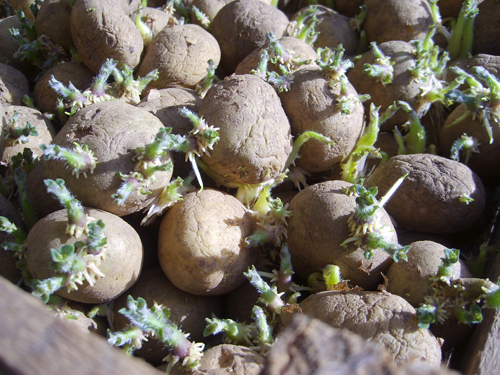
Many have noticed that in the spring "falling" potatoes often sprout, that is, tubers forgotten during the harvesting period. As a rule, it is not possible to get a decent harvest from such plants, but the very idea of planting before winter does not give rest to experimenters to this day. Given the relevance of the topic, we suggest that you familiarize yourself with some materials related to winter planting of potatoes.
About the advisability of planting before winter
It was noticed that "winter" planting of potatoes manage to form a crop long before the appearance of late blight outbreaks, that is, there is no need for preventive measures (spraying with chemical compounds). As you know, the worst pest of potatoes - the Colorado potato beetle - during the germination of tubers is still in "hibernation", so it does not cause much damage to sufficiently strong plants.
Despite the many advantages, planting under winter is a rather risky business, since tubers can die with little snow and in severe frost. This method of cultivation will have to be abandoned even if the farm practices spring cultivation of the garden.
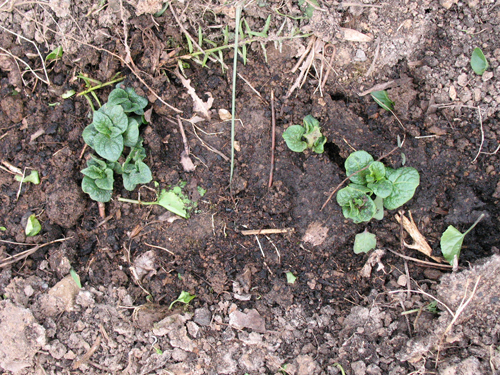
From all that has been said previously, the conclusion suggests itself that the decision to plant potatoes before winter must be taken carefully, taking into account the possible risks.
Seed preparation
In order not to be trapped, seed potatoes intended for planting before winter must be prepared. There is nothing special about this event:
1. First, the tubers must be "greened", that is, kept in the light for 10-14 days, periodically turning over. Under the influence of ultraviolet radiation in the skin, the process of synthesis of the alkaloid solanine is activated, which is quite toxic for most pests (with the exception of the Colorado potato beetle) and pathogenic fungi. By the way, "green" potatoes are better preserved, therefore many experienced gardeners practice such preparation of planting material in the case of using traditional growing technology.
2. Immediately before planting tubers, it is recommended to treat them with chemical means of protection, for example, a solution of the drug "Aktara" (for a bucket of water - 4-5 ml). Processed potatoes will not be to the taste of beetle larvae and wireworms.
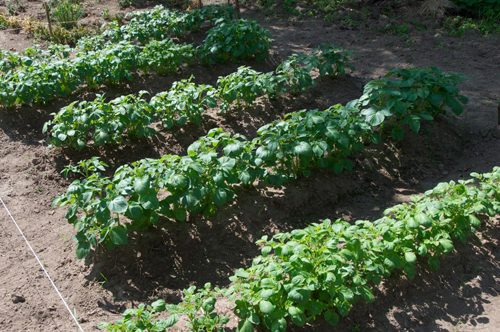
3. In order to protect against pathogenic fungi, in particular those provoking various rot, it is necessary to additionally treat the tubers with a solution of "Fundazole" (for a bucket of water - 10-20 g).
4. Treatment with trace element solutions is desirable but not required.
Chemical treatment can be carried out by soaking for half an hour, or by spraying the tubers - in the latter case, the consumption of chemicals will be higher, but there is no need to dispose of the remains of the unused solution.
Soil preparation and planting of tubers
There are several known soil preparation techniques:
- Deep digging with the simultaneous introduction of a complex nitrogen-potassium-phosphorus fertilizer mixture (approximately 15-20 g per 1 m2).
- Introducing superphosphate and ash into the planting holes (or trench), as well as the subsequent mulching of the plantings with sawdust soaked in Ammofoski solution.With this method, fertilizers are not so susceptible to washing out by melt water.
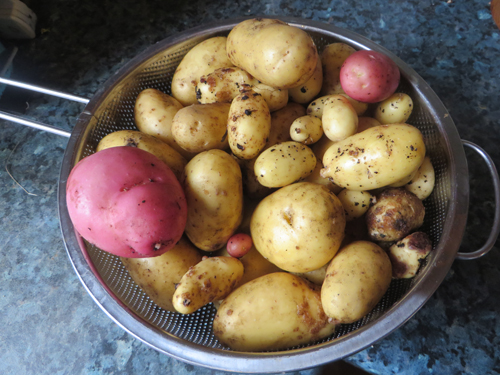
The depth of planting tubers for podzimny planting is 10-12 cm. If planting in holes is preferred, then 2-3 tubers are planted in each. When planting in a trench, potatoes are placed at a distance of 12-15 cm from each other.
In case of severe infestation by the bear, it is recommended to introduce biological means of protection ("Boverin") during planting.
The final stage of sub-winter planting is mulching with a layer of humus (5-8 cm) and straw (10-15 cm).
Potato care during the growing season
With the onset of spring, straw mulch should be shaved off to ensure that the soil warms up quickly. To protect against night frost, it is recommended to install wire arches over the beds and stretch plastic wrap.
As the seedlings grow, generally accepted agrotechnical measures are carried out (watering, fertilizing, preventive treatments to protect against diseases and pests). Before the plants enter the flowering phase, it is necessary to huddle the bushes twice.
There is an opinion among gardeners that the removal of flowering tops stimulates the growth of stolons (tubers) - and this statement is fully justified. Removal of the upper third of the stems is carried out during the period of mass flowering.
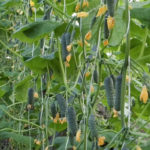


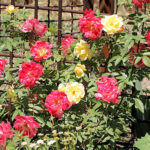
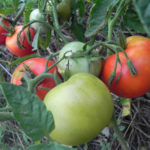
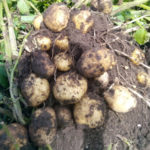



The most original agronomic idea I've ever heard. But there are nuances. The author at the very beginning brings out this technology in the form of a startup. Meanwhile, economic indicators are the least voiced: how much faster does winter potato yield a harvest? How quickly does the investment in mulch and greenhouse pay off? I didn’t notice that the overwintered potatoes bore fruit much earlier when planted. In short, you need to look closely at the technology.